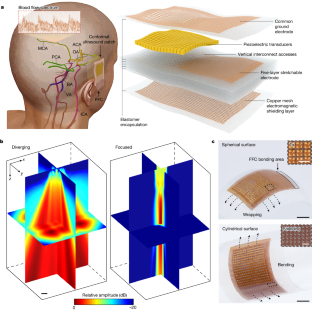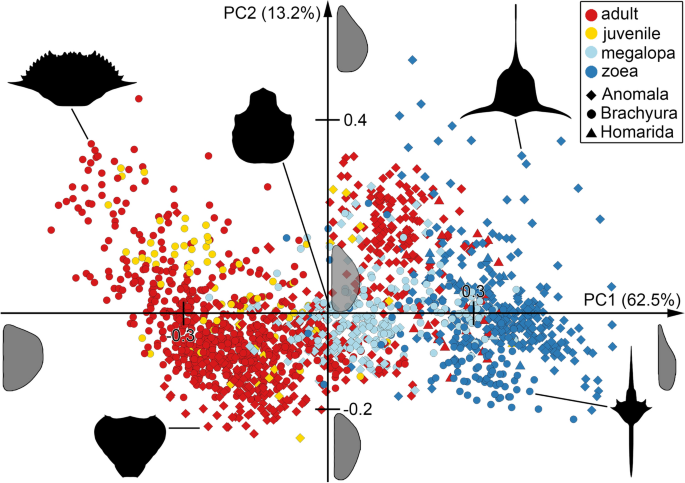2004-05-22 カリフォルニア大学サンディエゴ校(UCSD)
<関連情報>
- https://today.ucsd.edu/story/wearable-ultrasound-patch-enables-continuous-non-invasive-monitoring-of-cerebral-blood-flow
- https://www.nature.com/articles/s41586-024-07381-5
コンフォーマル超音波パッチを用いた経頭蓋ボリュームイメージング Transcranial volumetric imaging using a conformal ultrasound patch
Sai Zhou,Xiaoxiang Gao,Geonho Park,Xinyi Yang,Baiyan Qi,Muyang Lin,Hao Huang,Yizhou Bian,Hongjie Hu,Xiangjun Chen,Ray S. Wu,Boyu Liu,Wentong Yue,Chengchangfeng Lu,Ruotao Wang,Pranavi Bheemreddy,Siyu Qin,Arthur Lam,Keith A. Wear,Michael Andre,Erik B. Kistler,David W. Newell & Sheng Xu
Nature Published:22 May 2024
DOI:https://doi.org/10.1038/s41586-024-07381-5

Abstract
Accurate and continuous monitoring of cerebral blood flow is valuable for clinical neurocritical care and fundamental neurovascular research. Transcranial Doppler (TCD) ultrasonography is a widely used non-invasive method for evaluating cerebral blood flow1, but the conventional rigid design severely limits the measurement accuracy of the complex three-dimensional (3D) vascular networks and the practicality for prolonged recording2. Here we report a conformal ultrasound patch for hands-free volumetric imaging and continuous monitoring of cerebral blood flow. The 2 MHz ultrasound waves reduce the attenuation and phase aberration caused by the skull, and the copper mesh shielding layer provides conformal contact to the skin while improving the signal-to-noise ratio by 5 dB. Ultrafast ultrasound imaging based on diverging waves can accurately render the circle of Willis in 3D and minimize human errors during examinations. Focused ultrasound waves allow the recording of blood flow spectra at selected locations continuously. The high accuracy of the conformal ultrasound patch was confirmed in comparison with a conventional TCD probe on 36 participants, showing a mean difference and standard deviation of difference as -1.51 ± 4.34 cm s-1, -0.84 ± 3.06 cm s-1 and -0.50 ± 2.55 cm s-1 for peak systolic velocity, mean flow velocity, and end diastolic velocity, respectively. The measurement success rate was 70.6%, compared with 75.3% for a conventional TCD probe. Furthermore, we demonstrate continuous blood flow spectra during different interventions and identify cascades of intracranial B waves during drowsiness within 4 h of recording.


